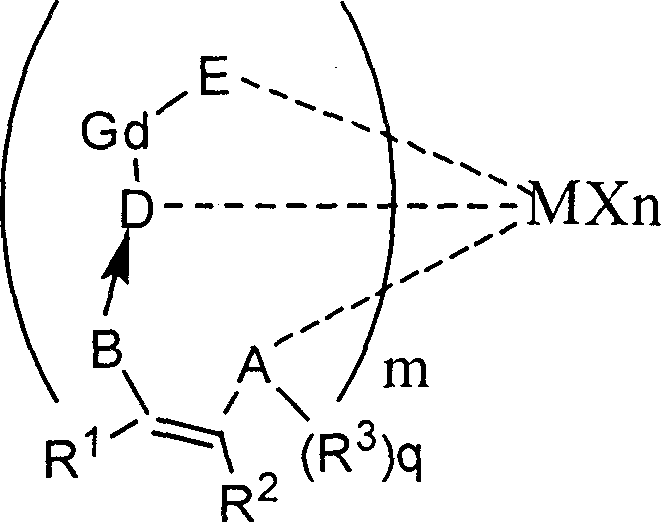Highly active supporting method of non-metallocene catalyst
A non-metallocene and catalyst technology, applied in the field of supported non-metallocene catalysts, can solve the problems of low catalytic activity, uneconomical application of supported catalysts, and reduced catalytic olefin polymerization activity.
- Summary
- Abstract
- Description
- Claims
- Application Information
AI Technical Summary
Problems solved by technology
Method used
Image
Examples
Embodiment 1
[0070] Embodiment 1, the highly active loading method of non-metallocene catalyst, mainly comprises the following steps:
[0071] The porous solid of the carrier adopts silica gel Grace 955, and the silica gel is heated at 500-800°C and N 2 Or continue drying or roasting under Ar atmosphere for 4-8h. Heat-activated dehydroxylated silica gel needs to be stored under an inert atmosphere.
[0072] The chemical activator adopts titanium tetrachloride; the activated carrier is reacted with titanium tetrachloride, and the modified carrier is obtained after filtering, washing, drying and pumping. The mass ratio of titanium tetrachloride and silica gel is 1: 40;
[0073] Magnesium chloride is dissolved in a tetrahydrofuran-ethanol mixed system to form a solution, and then the modified carrier is added into the solution, and fully reacted under the stirring condition of 0-60° C. to form a transparent system. The time is 1 to 48 hours, preferably 4 to 24 hours. The composite carrier...
Embodiment 1-1
[0081] Embodiment 1-1 is basically the same as Embodiment 1, but has the following changes:
[0082] Dissolve magnesium fluoride in tetrahydrofuran-methanol mixed system to form a solution.
Embodiment 1-2
[0083] Embodiment 1-2 is basically the same as Embodiment 1, but has the following changes:
[0084] Dissolve magnesium iodide in tetrahydrofuran-propanol mixed system to form a solution.
PUM
 Login to View More
Login to View More Abstract
Description
Claims
Application Information
 Login to View More
Login to View More - R&D
- Intellectual Property
- Life Sciences
- Materials
- Tech Scout
- Unparalleled Data Quality
- Higher Quality Content
- 60% Fewer Hallucinations
Browse by: Latest US Patents, China's latest patents, Technical Efficacy Thesaurus, Application Domain, Technology Topic, Popular Technical Reports.
© 2025 PatSnap. All rights reserved.Legal|Privacy policy|Modern Slavery Act Transparency Statement|Sitemap|About US| Contact US: help@patsnap.com



